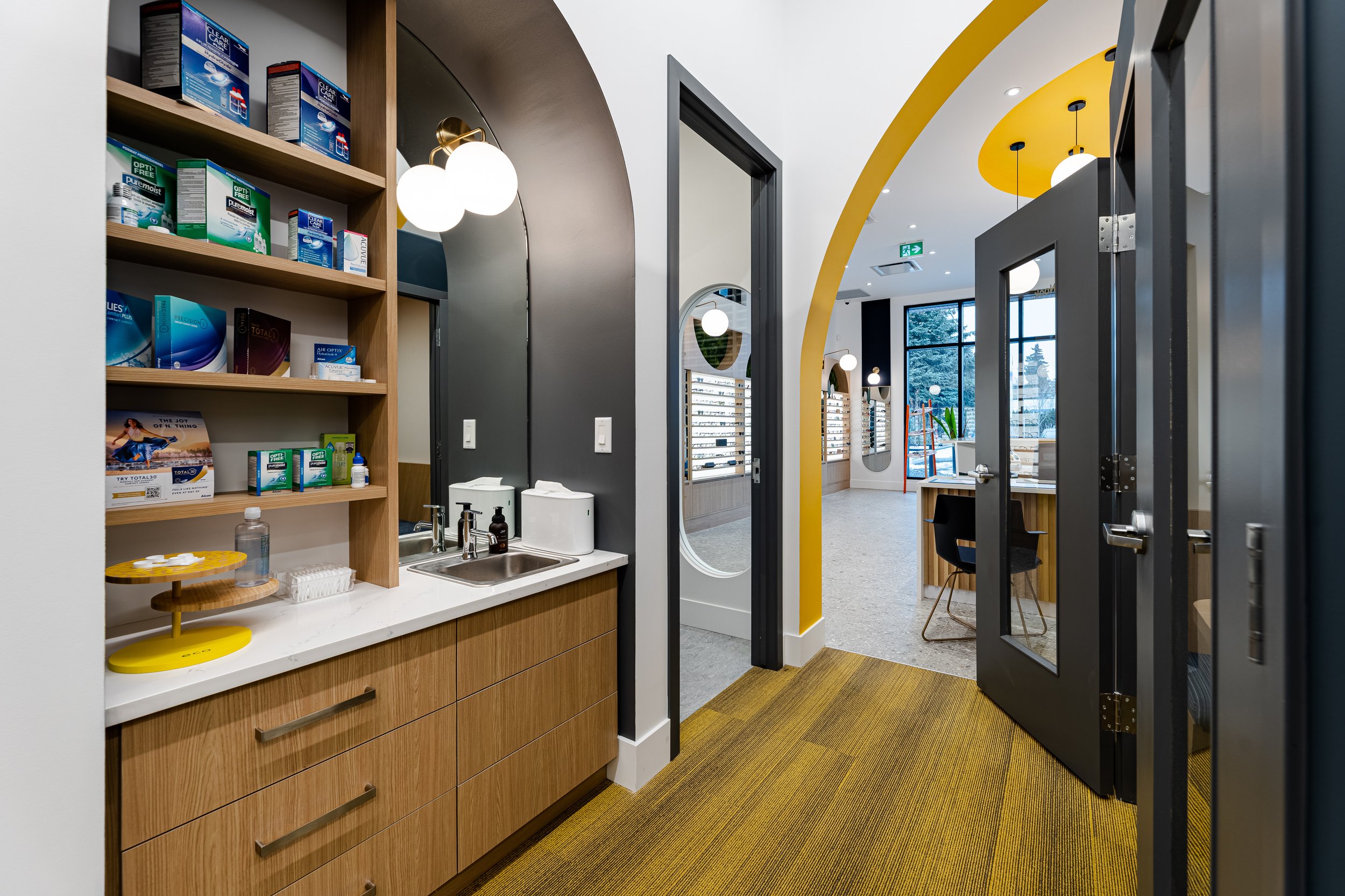
Optometrist Approved Soft Contact Lenses for Myopia Control.
Daytime Soft Disposable Contact Lenses That Are Designed To Slow Down The Progression of Myopia.
Does Your Child’s Vision Keep Changing Every Year? We can Help.
What It Means When A Child Is Nearsighted.
Myopia, also known as being nearsighted, is when you can see close objects clearly but have difficulty seeing objects farther away. Myopia is Canada's most common visual impairment, affecting approximately 35 to 40 percent of the population. This will likely increase. By 2050, it's estimated that 50% of the population in Canada will need glasses to see far away.
This is also one of the main reasons that patients seek help from their optometrist, when they feel their vision changes or becomes blurry.
Nearsighted Parents Likely to Have Nearsighted Kids.
Family history is a strong predictor of whether or not a child will need glasses to see far away. When both parents are nearsighted, there’s a 50% chance their children will require eyeglasses. If just one parent is nearsighted the risk is 33%. Even if neither parent is nearsighted, the risk is still 25%.
Why Myopia Care Matters.
Even if your child has a prescription as low as -1.00 D, it can increase their risk of developing glaucoma, myopic maculopathy, retinal detachment and cataracts by 2-3 times in their lifetime.
If your child has high myopia, for example -7.00 diopters or more, they are at a higher risk for:
retinal detachment (44x's)
cataracts (6x's)
glaucoma (3x's)
myopic maculopathy (127x's)
High myopia can also limit your child's quality of vision and even prevent them from being a candidate for refractive laser eye surgery.
Lower prescriptions may also allow someone to have functional uncorrected vision for certain tasks.
Why Does My Child’s Prescription Change?
Blurred vision from myopia occurs because the eye is too long in length.
The best analogy for this, is to imagine you were at the movie theatre and you pushed the screen 5 or 10 feet forward from where you were sitting. Because we have increased the distance between the projector and the screen, we have now made the movie blurry. To correct for this we must change the lens in front of the projector to bring the movie back into focus.
When the eye becomes to long our vision becomes blurred and we will need to change the prescription in our glasses. The inside of the eye is lined with the structures that allow us to see, including the macula, the retina and the nerve. When the eye lengthens these structures stretch and become thinned. This is how myopia causes the health concerns mentioned previously including retinal detachments, myopic maculopathy and glaucoma.
When we refer to myopia control, this is what we are controlling for. Slowing the elongation of the eye.
MiSight Contact Lenses.
How Do MiSight Contact Lenses Work?
Myopia is caused by the elongation or lengthening of the eye. This causes light to be focused in front of the retina instead of directly on it. This results in blurred vision for objects that are far away. MiSight contact lenses are designed with two treatment zones built into the lens. A central zone that keeps the child’s vision crisp and clear for school, sports and play, and a peripheral treatment zone that slows the elongation of the eye by causing a small amount of peripheral defocus that is not perceivable by the wearer.
MiSight contact lenses are a type of daily disposable soft contact lens that has been specifically designed to help slow the progression of myopia (nearsightedness) in children. The lenses are manufactured by CooperVision, a leading innovator and manufacturer of contact lenses,
Are MiSight Contact Lenses Safe For Children?
MiSight Contact Lenses are made from a high-quality, breathable material that allows oxygen to reach the eye, ensuring that they are comfortable to wear all day. They are a daily disposable contact lens which is the healthiest way to wear contact lenses. Because your child is putting a fresh sterile lens into the eye each and everyday, the risk of contact lens related complications is <1%.
MiSight Contact Lenses have been extensively tested and found to be safe for use with children. They have been approved for use by the FDA in the United States and by Health Canada.
What Are The Costs For 1-Day MiSight Contact Lenses?
MiSight Contact Lenses are a cost-effective treatment for myopia. If this is the chosen method for controlling your child myopia they will need to wear these contact lenses everyday. Even though these contact lenses will correct the child’s vision, allowing them to see clearly at all distance, it is still recommended they have a backup set of glasses in case of emergency.
The cost of annual (12 month) supply of MiSight Contact Lenses is $999.
Third party insurance that includes vision coverage may cover a portion of the cost of the lenses.
Contact lenses come in prescriptions from -0.50 D to -7.00 D.
What Alternatives Are There To MiSight Contact Lenses.
Other options available for myopia control in children include:
Eyeglasses with DIMS technology.
Compounded Atropine Eye Drops.
Orthokeratology.
MiSight Contact Lenses have been shown to be particularly effective at slowing the progression of myopia up to 59%. Depending on your child’s prescription, their visual habits and the results of their eye examination, MiSight contact lenses might be the best option.
SCHEDULE YOUR CHILD’S EYE EXAMINATION AT HELIO OPTOMETRY IN EDMONTON.
Our optometrists use the latest tools and techniques to measure myopia and develop a customized treatment plan that corrects eyesight and controls myopia progression. In addition, our eye doctors will take the time to get to know you and prescribe the treatment options best suited to your child's lifestyle and eye health. Book an appointment online today. See you soon!





